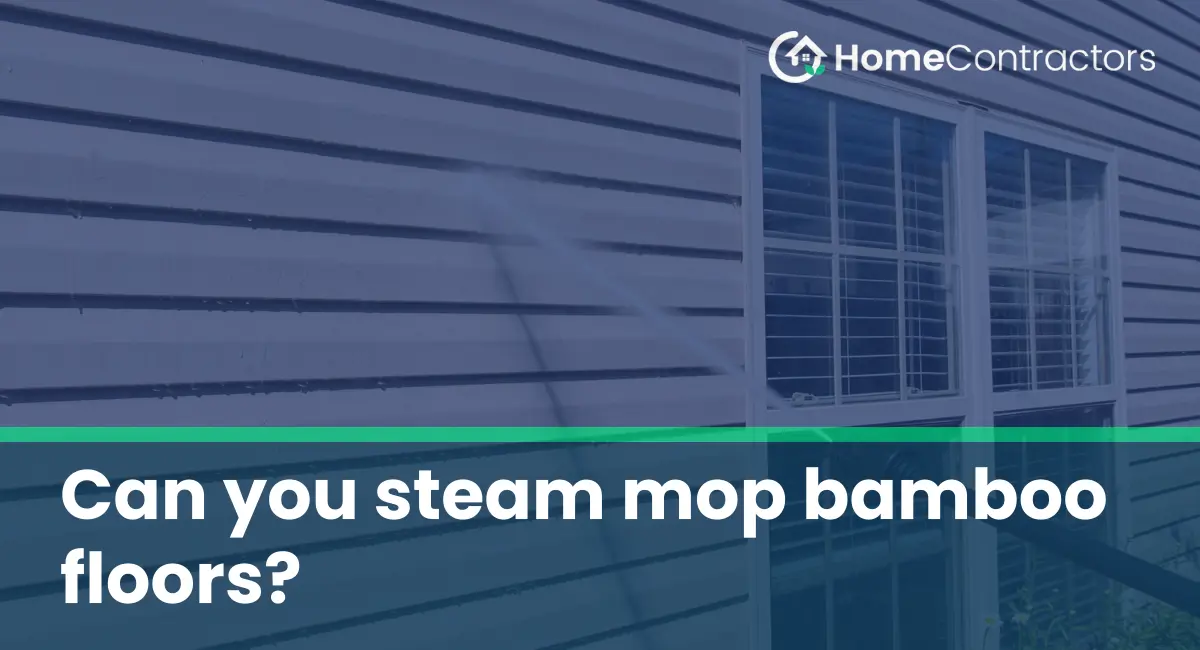Bamboo flooring has gained popularity in recent years due to its sustainability, durability, and natural beauty. Many homeowners are now considering steam mops as a convenient and efficient way to clean their floors. However, before using a steam mop on bamboo floors, it is crucial to understand whether or not it is safe and suitable for this type of flooring. In this article, we will explore the topic by discussing the benefits of bamboo flooring, the potential risks of using steam mops, and alternative cleaning methods to keep your bamboo floors looking their best.
Understanding Bamboo Flooring
Bamboo flooring is a type of hardwood flooring that is crafted from the bamboo plant. It is highly regarded for its eco-friendliness, as bamboo is a renewable resource that grows quickly compared to traditional hardwood trees. Additionally, bamboo flooring is known for its strength and durability, making it an excellent choice for high-traffic areas in your home.
The Potential Risks of Steam Mopping Bamboo Floors
While steam mops are commonly used on many types of flooring, there are some risks associated with using them on bamboo floors. Bamboo is a natural material that can be sensitive to excess moisture and heat. Steam mops generate both heat and moisture, which can potentially cause damage to the bamboo flooring.
Excessive Moisture: Bamboo flooring is susceptible to warping and swelling when exposed to prolonged or excessive moisture. Using a steam mop that emits a significant amount of steam can increase the risk of moisture penetration into the flooring, leading to potential damage.
Excessive Heat: High heat can also harm bamboo floors. Steam mops often produce temperatures exceeding 200°F (93°C), and direct contact with such heat can cause the bamboo to dry out and become brittle. This may result in cracking, splitting, or even discoloration of the flooring.
The Importance of Proper Care
To ensure the longevity and beauty of your bamboo floors, it is crucial to follow proper maintenance and care guidelines. Regular sweeping or vacuuming with a soft-bristle attachment will help keep the floors free of dirt and debris. Additionally, placing doormats at entrances will minimize the amount of dirt and grit that is tracked onto the bamboo floor.
Alternative Cleaning Methods for Bamboo Floors
Rather than using a steam mop, there are alternative cleaning methods that are safe and effective for bamboo flooring:
- Damp Mopping: Instead of using excess moisture from a steam mop, damp mopping is a suitable method for cleaning bamboo floors. Use a well-wrung mop or cloth dampened with a gentle cleaning solution specifically designed for hardwood or bamboo floors. Avoid using harsh chemicals or excessive water during the mopping process.
- Vinegar Solution: A homemade cleaning solution of vinegar and warm water can be an effective and eco-friendly option for cleaning bamboo floors. Mix equal parts white vinegar and warm water, then apply the solution with a well-wrung mop or cloth. Again, make sure to avoid excessive moisture during the cleaning process.
- Microfiber Mop: When choosing a mop for bamboo floors, opt for a microfiber mop. Microfiber pads are gentle and effective in removing dirt and grime without causing scratches or damage to the floor’s surface.
It is not recommended to use a steam mop on bamboo floors due to the potential risks of excess moisture and heat. Bamboo is sensitive to these factors, which can cause warping, swelling, or other damage to the flooring. Instead, opt for alternative cleaning methods such as damp mopping with a suitable cleaning solution or using a vinegar solution. By following proper care and maintenance guidelines, you can ensure that your bamboo floors remain beautiful and durable for years to come.
